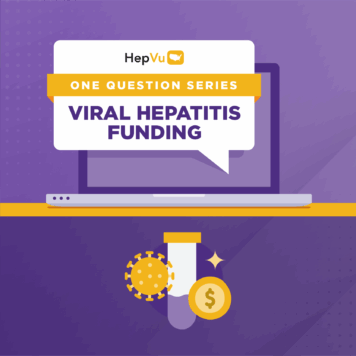Guest post by Don C. Des Jarlais, Ph.D., Professor of Psychiatry and Prevention Medicine, Icahn School of Medicine at Mount Sinai, New York, NY
The great majority of people living with antibodies to Hepatitis C or living with chronic Hepatitis C in the U.S. represent infections that happened many years ago. These are primarily “baby boomers” (individuals born between 1945 and 1965) who became infected through injection drug use in the 1960s and 1970s or through blood transfusions prior to the discovery of the Hepatitis C virus, development of antibody testing, and blood supply screening. Baby boomers represent approximately three-quarters of all Hepatitis C infections in the U.S., so it is critically important that they are screened for Hepatitis C, diagnosed, and treated, as many of them may be approaching end-stage liver disease.

The other important component of the U.S. Hepatitis C epidemic is smaller in absolute numbers but is the major source of new Hepatitis C infections: infections associated with the opioid epidemic, injection drug use, and the sharing of needles and other drug injection equipment. This problem is a growing one as new Hepatitis C infections in the United States nearly doubled between 2011 and 2014. In many parts of the country, persons who became addicted to opioid analgesics are transitioning to heroin injection as heroin is usually much less expensive. In the United States, those newly infected with Hepatitis C are more likely to be younger, more likely to be white, more likely to live in rural areas, and more likely to be infected because of injection drug use.
There are effective interventions to reduce the transmission of Hepatitis C among persons who inject drugs (PWID). Needle/syringe service programs that provide sterile injection equipment and medication-assisted treatment (methadone and buprenorphine) for opioid use disorders have effectively reduced Hepatitis C transmission where utilized. Additionally, we have a cure for Hepatitis C infection. The new direct-acting antiviral (DAA) drugs for treating Hepatitis C infection cure 90% or more of those treated. DAAs have a much higher cure rate than the previous treatments for Hepatitis C infection, require shorter lengths of treatment, and have much less severe side effects.
The combination of evidence-based interventions such as syringe service programs for prevention and medication-assisted drug treatment with the new DAAs has created the possibility of eliminating Hepatitis C infection for PWID populations. There are, however, many structural problems that we need to overcome: the coverage of syringe service programs and medication-assisted treatment is low in many parts of the world, including many parts of the U.S., and the cost of the new DAAs is very high in many countries.
Scaling effective combined prevention and treatment programs for Hepatitis C infection is essential to ending the Hepatitis C epidemic among PWID. Being cured of Hepatitis C infection does not prevent an individual from becoming re-infected with Hepatitis C. Many PWID who need treatment for Hepatitis C infection are likely to continue injecting drugs, particularly if they do not have access to effective substance use treatment. Additionally, the likelihood of re-infection is also determined by the prevalence of Hepatitis C infected persons in the local PWID population. Small-scale prevention efforts will undoubtedly prevent some new infections, and small-scale treatment programs will undoubtedly cure some cases of HCV infection (and save lives), but small-scale efforts will not halt the current epidemic of hepatitis C infections.
Ending the Hepatitis C Epidemic
What should we do about this complex Hepatitis C epidemic in the United States? The steps are different for the two main components of the epidemic. For the large number of baby boomer Hepatitis C infections, the key is screening tests to identify people living with Hepatitis C, about half of whom are not aware of their infection, and linking those living with chronic Hepatitis C infection to care and treatment. In fact, the U.S. Centers for Disease Control and Prevention (CDC) recommend that all adults born during 1945–1965 receive one-time testing for Hepatitis C.
For the newer PWID population, prevention is of the highest priority, and policies and programs that support safe injection practices, provide effective substance use treatment, and reduce initiation into injecting are important components of an overall plan to reduce Hepatitis C transmission. For these efforts to be truly effective, however, they will need to be conducted on a public health scale. Pilot-scale programs will not stop the Hepatitis C epidemic.



